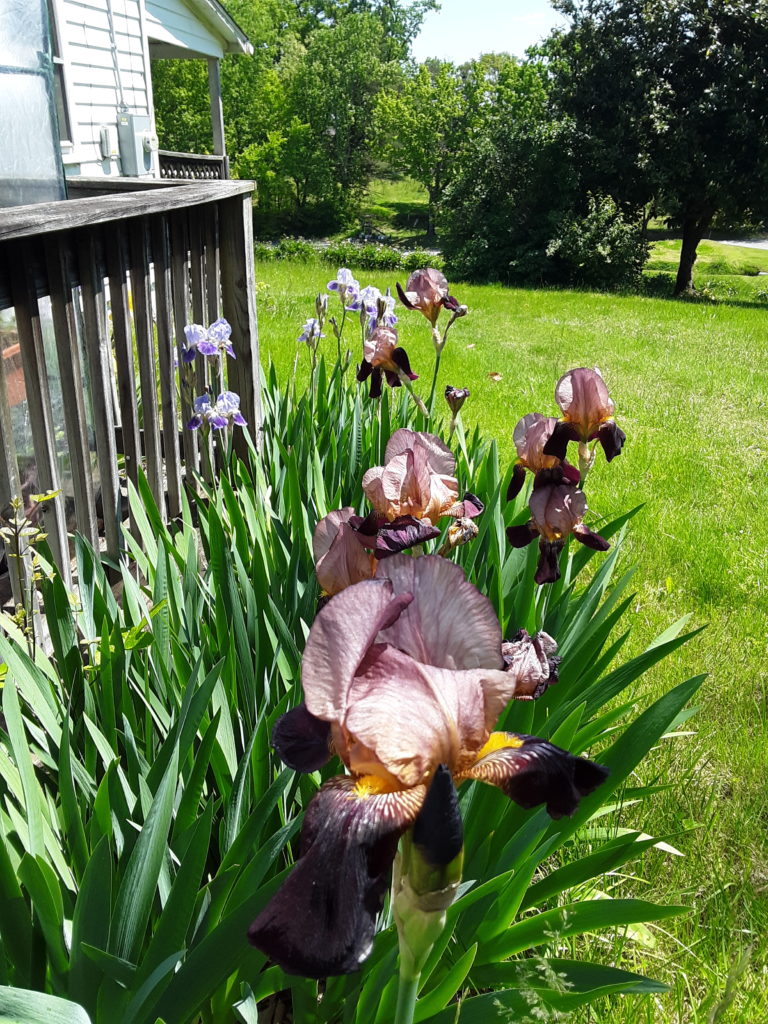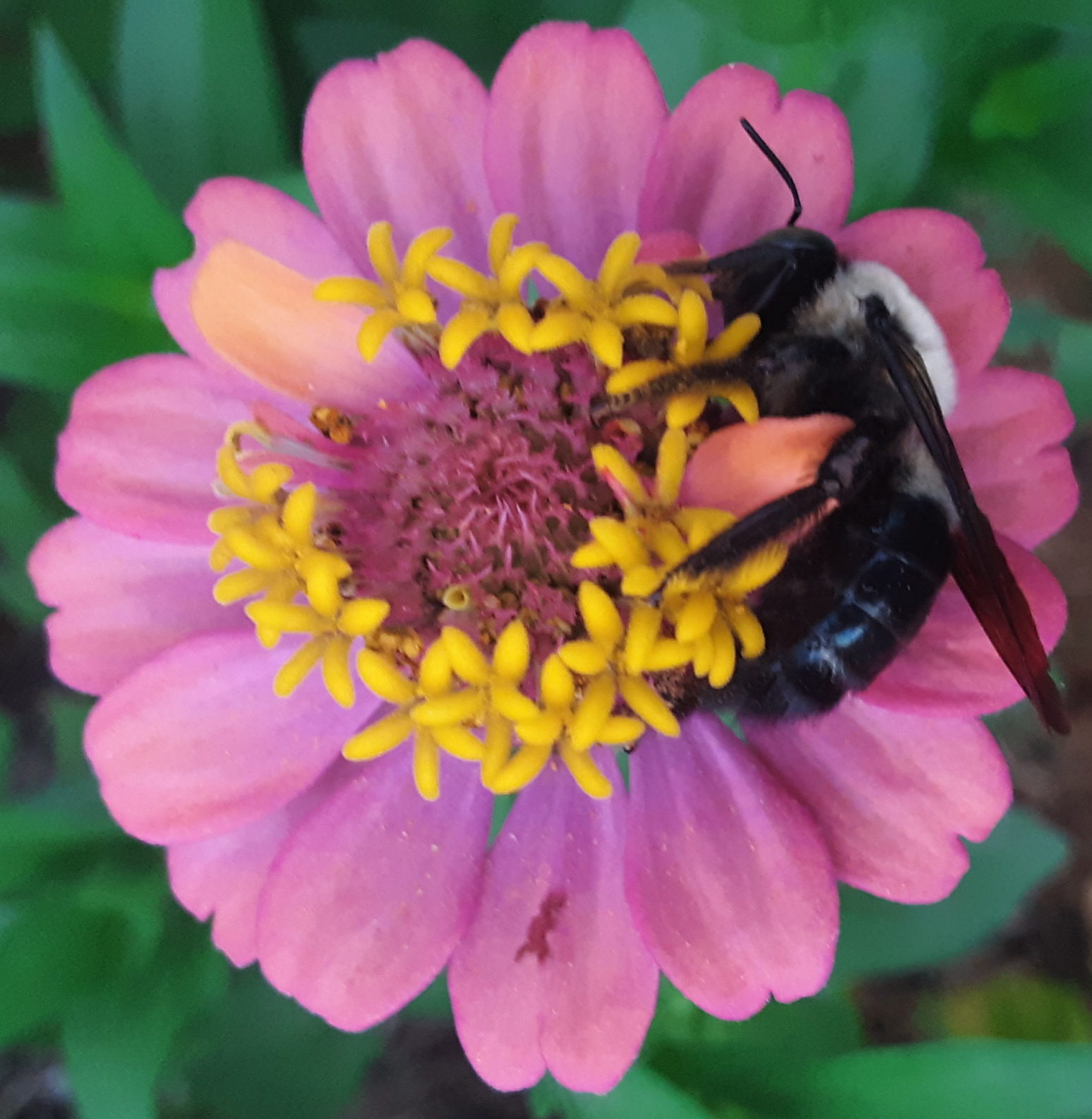
We only recommend products and services we wholeheartedly endorse. This post may contain special links through which we earn a small commission if you make a purchase (though your price is the same).
Cultivating beginner mind
Over the past 25 years or so, I have been a beginner at many things, as both a teacher and a learner in the garden. From teaching homeschoolers and grade schoolers how to install an Audubon- certified wildlife habitat, to organizing seed and plant exchanges and mushroom-inoculation parties, I am always in the market for great growing tips for gardeners!
I have been cultivating beginner mind while teaching a small and enthusiastic beginning “Garden Party” class at a University in Virginia renowned for its own gardens. While assembling my syllabus for my latest class, I asked myself ” What do I WISH I knew a quarter-century ago, when I was these young gardeners’ ages?
Garden books for beginners
The other day a student asked me which book I would recommend for beginners. Without hesitation, I shared one of the best beginning gardening books I have ever read: “Garden Crafts for Kids”, by Diane Rhodes. It has great photos, relevant projects with clear directions, and doesn’t assume (as many “How-to” books do) that the person reading already KNOWS how to do what they are reading a HOW-TO book for. How-tos written for children are refreshing, because they strive to make things as simple as possible for true beginners. So: 1. start with a good book. Or ten.
Know what you want to grow
What do you want to grow? This seems like a simple question. But, trust me- when you live somewhere like Virginia (where I learned to garden) and can grow vegetables any time of year, you sometimes find yourself growing ridiculous amounts of Bok Choy and Daikon radishes, just because you can.
Awesome variety isn’t a terrible thing. It just is inconvenient when you are trying to figure out what to do with all those leafy greens and forearm-sized radishes, because no one you know has ever heard of (much less eaten) Bok Choy and Daikon radishes!
Maybe you find yourself always stuck in the front aisle at Whole Foods or Trader Joe’s right where all the beautiful bouquets are located? Or needing cilantro at inconvenient hours to complete your delicious salsa recipes? Perhaps you just moved to a neighborhood full of kids and want to be the nice lady giving away free pumpkins on the corner?
Soooo many options!!! Look at your grocery receipts, think about what you buy, or wish you could buy, and plan accordingly. 2. Grow what you like!!! (if you envy your friend’s peppers or Drunken Watermelon offerings at mid-August potlucks, those are clues).
Talk to the neighbors about their gardens before you plant
This year, our area sustained a months-long drought. The local deer and groundhogs were reportedly eating peonies, zinnias, tomato plants. According to my gardening books, these are things they “don’t like”. Clearly, they read different books than I do! They ate all of those items, and more.
Imagine my “a-ha” moment when a kind neighbor proudly brought me a jar of her delicious homemade salsa, and showed me her well-fenced garden. It was hard to miss (and easy to envy) those tons of non-bothered tomatoes ripening within.
Her approach was to have raised beds, with a fence deer had no incentive to scale, because it was attached to a shed so there would be nowhere to land if they jumped it. It was too tall for the tubby groundhogs who’d been feasting well just next door at my place.
I really really wish I’d conferred with her about the area’s Bambis and woodchucks(I name them all Phil). I could have saved myself many hours and dollars lost to preventable problems. 3.Talk to your neighbors! It seems obvious now, but they can tell you things no Youtube video or book can tell you about your site!
Assess the soil and plants on your site before planting!
Conversely, there ARE things that the internet and books can tell you. These things offer valuable clues as to what your site is already prepared for: I am talking about ‘soil indicators’, also known as ‘indicator plants’.
Common weeds such as dock, chickweed, dandelion tell you that your site has plentiful iron (dock), is fertile (chickweed) has ample iron AND (AGAIN) is fertile (dandelion). By using a helpful plant identification app like Seek, or Picture This , or a freebie like Google Lens (good not just for plants but insects and all kinds of things), you can survey the plants in an area you’d like to site your garden.
Then, decide if that spot is right for what you want to grow, or if it would be better to do so elsewhere. If you cross-reference with the three-page chart of soil indicator plants from Robert Kourik’s book “Designing and Maintaining your Edible Landscape Naturally“, you’ll be armed with even better info than you can glean with a soil test.
To be on the safe side, though, get a soil test, too. They are a very low-cost investment available from your local extension office, or from the local hardware store. Rapitest is great for pH tests, and common NPK test (Nitrogen, Phosphorus and Potash) So…4.Assess the site (plants AND soil) BEFORE you plant.
Determine the time and money you have to spend beforehand
We are so lucky in Virginia that we can plant or harvest something every month of the year! The only limits are what YOU want to spend (money and time-wise).
If you have lots of energy, but little money, great! Trade seeds and plants with gardener friends.
If you have money, but not as much time or energy as you’d like, plant in containers (no weeding) and maybe pay for help so you can enjoy the aspects of gardening you enjoy more.
Do you LOVE to start seeds, or harvest pumpkins, but HATE weeding in July? It’s (as my daughter would say “quality of life”): pay someone to help you. You shouldn’t have to live without a beautiful garden view just because you have a low income, a busy work schedule, or back problems.
5.Determine how much time, energy and money you have to spend on your garden, and plan accordingly, before even breaking ground or planting one seed. A little planning now means the difference between a pleasant experience or possible heartbreak later (and there is almost nothing sadder than a missed banner fruit harvest, because you were away on vacation mid-summer).
Get growing!
I hope these tips encourage you to have a garden that you enjoy in many ways! Create a bountiful patio full of plants, a fulfilling flower border or a pumpkin patch straight out of your childhood dreams. You can do it!!! I hope you will be telling everyone: “Virginia is for Gardeners!”
